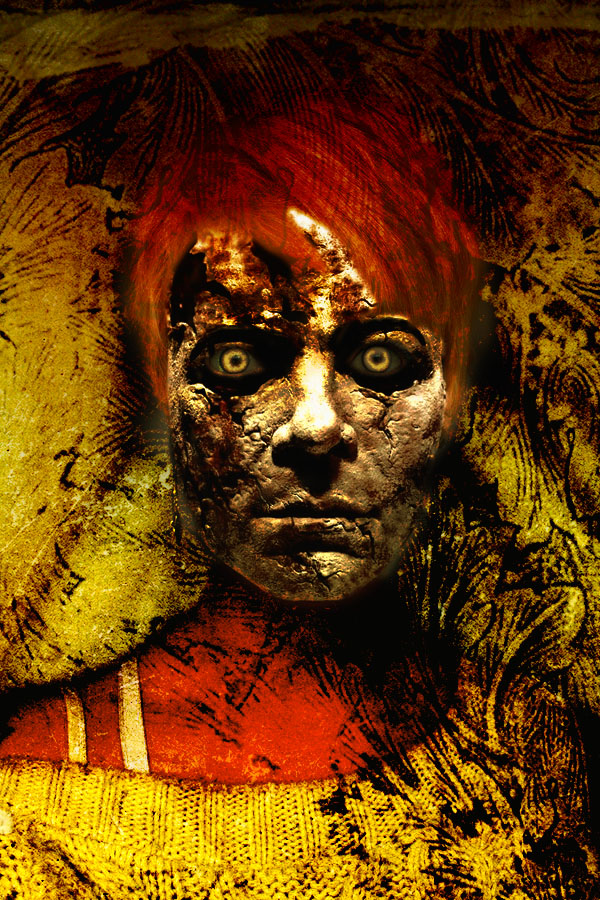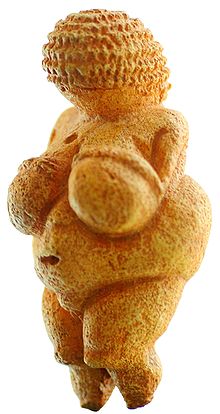KBF: I grew up on my parent's grain farm on
the flat treeless Pirrinuan Plain, outside Dalby on the fertile Darling
Downs, Queensland, Australia. The distance of my childhood landscape has
influenced my work as an artist. Night skies, endless horizons,
relentless mirages and more have, I am sure, helped stimulate my
interest in the spatial and temporal distances of the Universe. My
interests in cosmology, technology and science stem from parental and
environmental influences. My father, whilst a farmer, is also a
keen HAM radio enthusiast. Thus, I grew up surrounded by technology eg:
we always had communication devices in our vehicles, we learnt about
world news before others due to the HAM international network and more.
My mother who has tertiary degrees B.A., B.Ed St., and a Masters
[research] all from the Univeristy of Queensland, provided inspiration
to extend interests, particularly cultural ones. She writes and paints
also. I attended schools in Dalby. I also
attended boarding school in Toowoomba where I held leadership positions,
debated and studied hard. After school, I competed a B.A [double major
Art History] at the University of Queensland. Upon graduation I
successfully applied for a curatorial assistant position at the National
Gallery, in Canberra. After marrying quite young I lived in
Goondiwindi, on the border of Queensland and New South Wales, where my
husband practiced law in his own firm. I lived in Goondiwindi for 18
years before moving to Brisbane with my children. In Goondiwindi I was
active in a variety of community activities from cultural, sporting and
educational. As a farmer's daughter I was also keenly interested in
rural business and the impacts of various government policies on farm
success. The complexity of rural life and business is real. I am
interested in issues dealing with water, soil sustainability, mining and
sustainable farm practices. These issues also enter and influence my
work as an artist. Since moving to Brisbane I have
continued with my visual art practice, exhibiting in Australia and
overseas, mainly the UAE, but also London and Korea.
DV: When did you know that you were going to be an artist? Did you ever have any other ambitions?
KBF:
I always had an impression of myself as an artist. My mother encouraged all
kinds of cultural and artistic pursuits, so I grew up in an environment that
was very supportive. I remember painting as a small child and people responding
with enthusiasm to my work. This meant I had a positive view of myself as an
artist, unlike a lot of people who remember people saying negative things to
them. Those early encounters with positive people are really important for a
child’s burgeoning self concept and esteem. I received lots of art awards from
when I was very young to my late teens, so that helped keep the positivity
alive. After secondary school I completed a B.A majoring in Art History at the University of Queensland. My
dream was to be the director of a major institutional art gallery. This
possibly could have happened, as straight out of university I got a job at the
National Gallery of Australia, Canberra.
However, I moved to Goondiwindi with my then-husband.
Whilst there were no opportunities for major gallery work in Goondiwindi, it
did see me focus on my painting. I had held my first exhibition at age 17, but
my second one was at age 29. If I had stayed in the gallery system I may not
have been able to sustain a studio practice as well. In Goondiwindi I had a
couple of studios over many years. One was an old church and the other an old
shearers’ quarters, both moved into the gardens I had at the time. I exhibited
in Brisbane, but
it was a huge effort – almost like exhibiting in another country, which I did a
few times, once I had moved to Brisbane in
2000. I have exhibited in London, Dubai, Abu
Dhabi and Seoul. My
previous curatorial work has come in very handy with regards to organising and
managing my own exhibitions. I love painting and have a studio [aka my garage]
which is set up so that I can start work at any time. I also blog www.kathrynbrimblecombeart.blogspot.com
and have been posting once a week for nine years. I see my blog as an intrinsic
part of my art practice. In late 2014 the Queensland State Library, out of the
blue, nominated my blog to be archived in perpetuity on PANDORA, Australia’s
national archive for online sites of significance and ongoing research value.
Needless to say I was delighted!
DV:
For those of us who are uninitiated to the workings of the art world, what are
the differences between gallery and studio practice that would have made it
difficult for you to do both?
KBF:
An institutional gallery is a place for the exhibition of artwork, with
accompanying educational, public and academic programmes. It’s often government
funded or funded by some kind of benefactor. There’s normally a Board of
Directors or a Trustee Committee, with a range of professional and support
staff. It is not a place for artists to work, except possibly if they have been
invited to participate in a children’s program or another kind of educational
one. So, when I worked at an institutional gallery, like any full time job,
there were difficulties in finding the time to concentrate on my painting. A
studio practice is where the artist has a designated place to work, where
paints and other materials can be normally kept without having to be put away.
If materials can be left out, an artist can return to the studio, after being
out or away, without needing to set up again.
DV:
From your paintings I am familiar with, you seem to favor geometric
abstraction. (I don't mean in the Kandinsky mode, but that they are not
photographic representations of reality, they are often but not always
isometric designs). What is it that attracts you artistically to that style? Do
you dabble in other styles as well?
KBF:
I am not sure what style you would ascribe to my paintings. Sometimes my
paintings are very detailed and then at other times they are not. I think
expressionism is one term you could use though. I am drawn to working in a
style that is not illustrative, graphic, super-realist, or representativo
in a traditional sense. I try to provide the viewer with launch pads for their
own imaginations.
DV:
How do you get on with it? Do you have some sort of image in your mind ahead of
time that you work from or is it more spontaneous than that? Do you go through
a long preparatory process, with sketches and so forth?
KBF:
When I am painting every day or nearly every day, the ideas flow – they flow
from one painting to the next. Often I get many ideas as I work on a painting.
When I have not painted for awhile, I need time to get back into a flow. So,
this normally means many more torn up or scrubbed out paintings than normal.
Yes, normally there is some tearing up or wiping out. I’ve learnt to see these,
not as failures, but as opportunities. Sometimes, the accident can work
beautifully. Sometimes, there’s a recognition that I am over-working the image.
I get most of my ideas from thinking about things like symbols, landscape, the
cosmos, existential risk, cosmology. When I go to a talk or lecture, or read a
book or an article, I ‘see’ images in my head. They are not illustrations, but
amalgams of various inspirations. As far as preparation goes, I’d say that the
ongoing practice is always a constant ‘preparation’. Sometimes a painting can
take a long time and sometimes a short time. But, in each case they cannot be
separated from the hours, days, weeks and years an artist devotes to their
practice.
DV: I know some poets who claim that they work spontaneously, without
revision. I've had a handful of poems that came into existence that way, or
with rather minor adjustment, but in general that hasn't been my experience.
Usually, the vision emerges from the revision. I'm intrigued by your
phrase, "amalgams of inspirations." I wonder if you could tell us
what you mean by that, in some depth?
KBF: When I wrote " amalgams of
inspirations" I was thinking about how I combine ideas. I ‘see’ links
between things, often many more than two things too. Sometimes, I represent
these ideas symbolically and sometimes not. Each painting is both a revision
and a vision in a sense, because each one builds on another. This building does
not have to be from the most immediately recent work either. As ideas come,
they may link with paintings that maybe years old. When I start a painting,
working my background up, I am constantly re-working, wiping, manipulating.
DV: What projects are you interested in pursuing these
days?
KBF: Currently I am really interested in working around ideas that come
from my research at the University of Queensland. I am doing a research M.
Phil degree. The degree does not include my own work, but as I read and think
about my thesis topic, ideas are sparked for my own paintings. However, these
ideas stem from interests that lead me to the university research in the first
place. These interests were already stimulants for my paintings. They include
cosmology, space, age-old symbols, untethering landscape from Earth-bound
horizons, exodus to exo-planets, existential risk. My thesis topic revolves
around a contrary and novel intersection I am proposing between
existential risk posed by emerging technologies research and the hands-on
painting practices of two Australian artists. One of the emerging technologies that
existential risk researchers are concerned about is artificial intelligence.
Research aims are to ensure its development is for the benefit of humanity.
However, it does spark ideas about transhumanism and posthumanism, which may
occur from necessity, desire, insidiousness or even accident. I have started
using some binary code in my work, to ‘play’ with it. I have a perverse joy in
painting it and visually deploying it with other things I see as ‘codes’
too...like the age-old transcultural/religious tree-of-life. By the time I have
finished my M. Phil I will have a good body of work that reflects upon my
research. At the moment I am sticking to works on paper, as the first six
months of study has been hectic.
DV: Thank you for your time. I know you have been particularly busy over these past few months. From our conversation I have learned a lot about the visual-art process, and I'm sure our readers have as well. I certainly hope you will share many more of your works with us.














